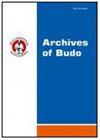24小时连续仰卧起坐的代谢、血液学和抗体反应:病例报告
IF 1.5
3区 医学
Q3 SPORT SCIENCES
引用次数: 0
摘要
背景:关于需要大强度和极端持续时间的周期性运动中代谢反应的信息很少,这代表了人类能力的极限。材料和方法:举重运动员训练并进行24小时连续仰卧起坐,腹部呈弧形。比赛期间的饮食是精心设计的,每小时给运动员提供一次。在运动过程中,每隔四小时采集一次毛细血管血液样本,测量其代谢、血液学和抗体反应。结果:在运动中点观察到最低水平的葡萄糖,随后返回到基础水平。在锻炼的后半部分,尿素水平稳定且升高。肌肉损伤的血浆标志物(CK和LDH)在运动前半段稳步上升,并在运动后半段保持在最大水平(分别为2800 U/l和700 U/l)。粒细胞在运动中点达到最大值,随后减少,而粒细胞逐渐增加,直到运动结束。IgA和IgG在第4小时达到最低水平,在运动结束时也是如此。运动期间肌肉损伤标志物(尿素、尿酸、无机磷和粒细胞)之间存在高度正相关。结论:1。低碳水化合物摄入对运动员的运动成绩没有显著影响;2. 膜的通透性是CK反应的主要因素。本文章由计算机程序翻译,如有差异,请以英文原文为准。
Metabolic, haematological and antibody response during 24 hours of continuous sit-ups: case report
Background There is little information about the metabolic response during cyclical exercise requiring great strength and of extreme duration, that which represents the limit of human capacity. Material & Methods: A weight lifter trained for and carried out a 24-hour session of continuous sit-ups with abtoner in the form of an arc. The diet during the event was carefully designed and given to the athlete every hour. The metabolic, haematological and antibody response was measured in the capillary blood samples taken every four hours during the exercise. Results: A minimum level of glucose was observed at the midpoint of exercise, followed by a return to the basal level. During the second half of the exercise session, there was a steady and elevated level of urea. Plasmatic markers of muscular damage (CK and LDH) increased steadily during the first half of the exercise session, and remained at their maximum level (2800 U/l and 700 U/l, respectively) during the second half. Granulocytes reached their maximum level at the midpoint of exercise and diminished afterwards, whereas agranulocytes increased gradually until the end of the exercise session. IgA and IgG showed their lowest level at hour 4, and again at the end of the exercise. There was a high positive correlation between markers of muscular damage (urea, uric acid, inorganic phosphorous, and agranulocytes) during exercise. Conclusions: 1. low carbohydrate consumption did not significantly limit performance of athlete; 2. the permeability of the membrane is the dominant factor for the CK response during.
求助全文
通过发布文献求助,成功后即可免费获取论文全文。
去求助
来源期刊

Archives of Budo
SPORT SCIENCES-
CiteScore
2.80
自引率
47.60%
发文量
0
审稿时长
>12 weeks
期刊介绍:
Archives of Budo is an international peer reviewed journal publishing articles on various aspects of the sports sciences covering education and research in martial arts and combat sports, and related areas like biomechanics, kinesiology, medicine, psychology, sociology, technologies of sports equipment, research in training, selection, performance, survival, and other interdisciplinary perspectives.
Archives of Budo editors endorse the principles embodied in the Helsinki Declaration and expect that all research involving humans has been performed in accordance with these principles. All human studies must have been approved by the investigator''s Institutional Review Board. A copy of the relevant documentation should be included with the manuscript. Furthermore Archives of Budo follows the ICMJE''s Recommendations for the Conduct, Reporting, Editing and Publication of Scholarly Work in Medical Journals.
Archives of Budo provides free, immediate and permanent online access to the full text of all articles distributed under the terms of the Creative Commons Attribution Non-commercial License http://creativecommons.org/licenses/by-nc/4.0), which permits use, distribution, and reproduction in any medium, provided the original work is properly cited, the use is non-commercial and is otherwise in compliance with the license.
 求助内容:
求助内容: 应助结果提醒方式:
应助结果提醒方式:


